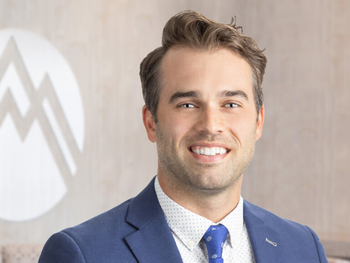Liebenberg Syndrome Overview
Learn About Liebenberg Syndrome
Liebenberg syndrome is a condition that involves abnormal development of the arms, resulting in characteristic arm malformations that can vary in severity. In people with this condition, bones and other tissues in the elbows, forearms, wrists, and hands have characteristics of related structures in the lower limbs. For example, bones in the elbows are abnormally shaped, which affects mobility of the joints. The stiff elbows function more like knees, unable to rotate as freely as elbows normally do. Bones in the wrists are joined together (fused), forming structures that resemble those in the ankles and heels and causing permanent bending of the hand toward the thumb (radial deviation). The bones in the hands (metacarpals) are longer than normal, and the fingers are short (brachydactyly), similar to the proportions of bones found in the feet. In addition, muscles and tendons that are typically found only in the hands and not in the feet are missing in people with Liebenberg syndrome. Affected individuals also have joint deformities (contractures) that limit movement of the elbows, wrists, and hands. Development of the lower limbs is normal in people with this condition.
Liebenberg syndrome is caused by genetic changes near the PITX1 gene. The protein produced from this gene plays a critical role in lower limb development by controlling the activity of other genes involved in limb development, directing the shape and structure of bones and other tissues in the legs and feet.
Liebenberg syndrome is a rare condition. Fewer than 10 affected families have been described in the medical literature.
Liebenberg syndrome is inherited in an autosomal dominant pattern, which means having a genetic change that affects the PITX1 gene on one copy of the chromosome in each cell is sufficient to cause the disorder. In most cases, an affected person has one parent with the condition.
Loyola University Medical Center
Felicity Fishman is a Hand Surgeon in Maywood, Illinois. Dr. Fishman is rated as an Advanced provider by MediFind in the treatment of Liebenberg Syndrome. Her top areas of expertise are Syndactyly Type 2, Syndactyly, Syndactyly Type 1, and Proximal Symphalangism. Dr. Fishman is currently accepting new patients.
Robert Umberhandt is a Pediatric Orthopedics specialist and an Orthopedics provider in Portland, Oregon. Dr. Umberhandt is rated as an Advanced provider by MediFind in the treatment of Liebenberg Syndrome. His top areas of expertise are Accessory Navicular Bone, Congenital Radioulnar Synostosis, Sprengel Deformity, and Brachydactyly Type A2. Dr. Umberhandt is currently accepting new patients.
Summit Orthopedics - Eagan
Michael Baer, M.D., is an orthopedic surgeon at Summit Orthopedics specializing in hip and knee arthritis and joint replacement, serving Minneapolis/St. Paul patients. After residency, he attended the renowned Scripps Clinic Adult Reconstruction Fellowship, where he received specialized training in simple and complex hip and knee arthroplasty, revision arthroplasty, and nonarthroplasty joint preservation. “Spending ample time at the beginning leads to a high rate of successful surgeries that get patients back to a life that they’ll enjoy and find meaningful,” Dr. Baer shares. Dr. Baer is rated as an Experienced provider by MediFind in the treatment of Liebenberg Syndrome. His top areas of expertise are Osteoarthritis, Knock Knees, Calcium Pyrophosphate Arthritis, Osteotomy, and Hip Replacement.
Published Date: September 01, 2016
Published By: National Institutes of Health
